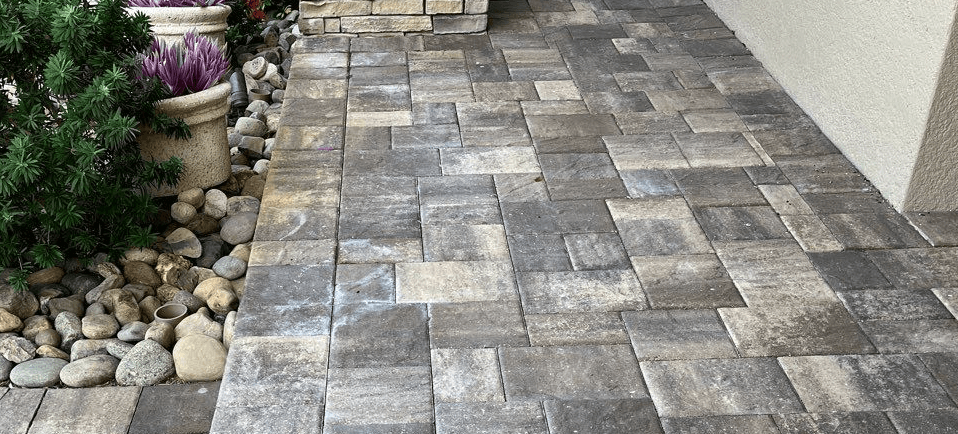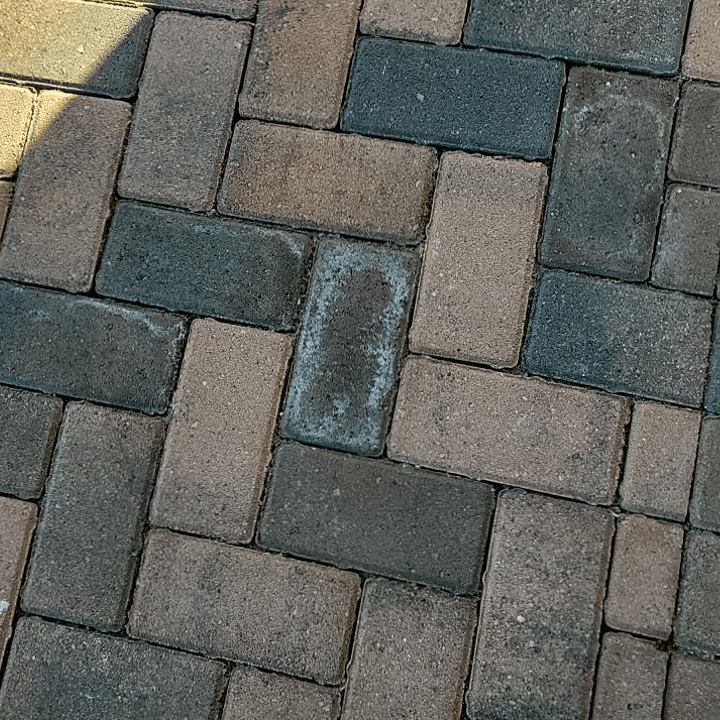
What is Efflorescence?
Efflorescence and Pavers: Causes, Solutions and Prevention
You just had your new paver hardscape installed and noticed powdery white areas appearing. “What is this on my pavers?”, you ask yourself. Stop. Don’t call the installer. There is nothing wrong with your pavers.
This is a natural process known as efflorescence.
What causes efflorescence?
Migration of water-soluble salts from the bottom to the surface of the pavers is what causes Efflorescence. Water present in the soil or from water that is used to wash the pavers brings the salts to the surface. Once the water evaporates, it leaves behind these salts, which can then crystallize and form a white or light-colored powder on the surface of the pavers.

What is efflorescence?
Calcium salts that sometimes form on the surface of concrete, brick, stone and other porous surfaces. Also known as Efflo.
Does efflorescence cause problems?
Despite the ugly discoloration, “efflo” does not compromise the paver’s strength or durability.
Areas with high humidity or frequent exposure to water are where efflo usually occurs. It not only appears as a white or light-colored powdery substance on the surface of the pavers, but is unsightly and can be difficult to remove. Unlike failed sealer that can give pavers a white hazy look, efflorescence appears to vanish when the pavers get saturated with water. In comparison, failed sealer will continue to show the ugly white haze.
How do I get rid of efflorescence?
There are a few options for removing “efflo”.
Time
Depending on your paver and climate, efflorescence will work its way out in about 2 – 3 months to years.
Maintenance
Washing with dish soap, water and a stiff plastic scrub brush, then rinse off. Using a wire brush is not recommended. Wires can dislodge and cause rusting if not removed from the surface.
Efflorescence Remover
Most landscape suppliers carry a chemical efflo remover. It is typically an acid based cleaner. If you are not having a professional do this treatment, read the instructions carefully. This cleaner can change the color of the surface and should not be mixed with other chemicals like chlorine.
Will efflorescence come back?
Maybe. That powdery white mineral has the potential to creep back to the surface.
What can I do to reduce the chance of efflorescence returning?
There are some things you can do to prevent efflorescence from happening on your pavers.
Dry
- Keep your pavers as dry as possible, especially after they have been washed. The main culprit of continuing problems is water infiltration. Poor drainage, leaky pipes, elevated groundwater and improper sealing are some of the reasons efflorescence returns.
Seal
- After pavers are installed, be sure to use a high-quality paver sealant. This will help to protect the surface of the pavers from water and other elements, which in turn can help to prevent efflorescence from occurring in the future.
Low-pressure rinse
- When you need to wash your pavers, be sure to use a low-pressure hose or a pressure washer set to a low setting to avoid forcing water into the pores of the pavers.
Can someone help me remove the efflorescence?
Hire a professional sealing company to clean and remove efflo as well as seal the stones. Choosing a professional for a project like this will reduce the probability of efflorescence returning, as well as make cleaning the hardscape easier in the future.
If you have any other questions, speak to a paving contractor, landscape dealer, or stone expert for guidance and assistance.
Ready to take your pavers to the next level?
Take the next step towards beautiful, protected pavers and ensure you receive the best service tailored to your needs. Fill out the request quote form today to start the journey towards revitalizing your outdoor space!
When you submit the form we will reach out right away to discuss your project, or Schedule a Call to get started at a time that works best for you.
You’re always welcome to call us at 813-480-9093 and speak with us now
Contact Our Office Today
We welcome the opportunity to exceed your expectations. Contact our office today for a FREE quote!


